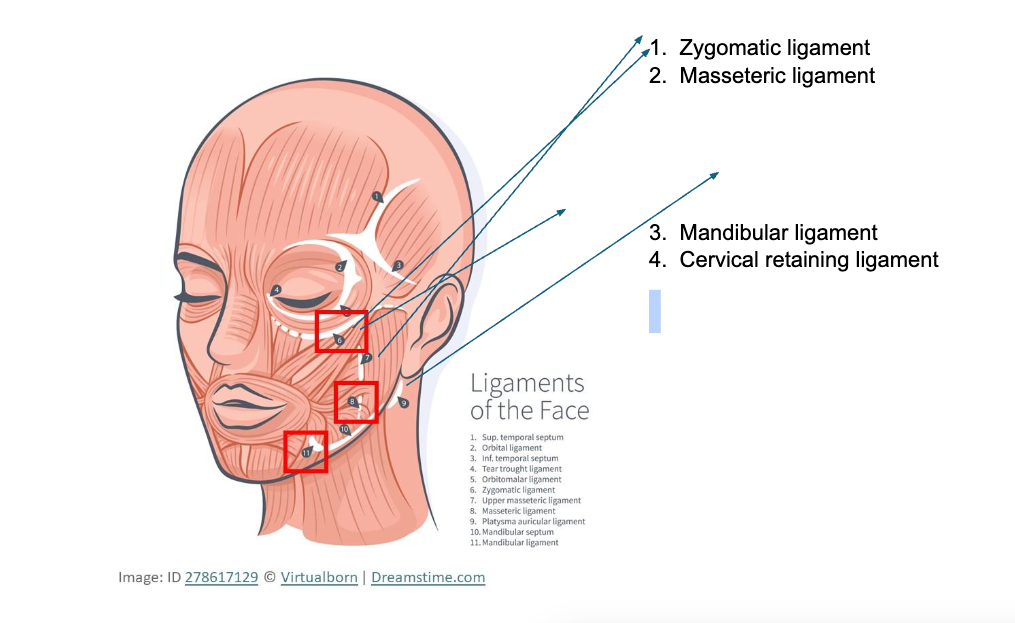

Facial Retaining Ligaments and the effectiveness of a Deep Plane Facelift
Facial retaining ligaments are structures that hold the soft tissues of the face to the underlying skull. There are 4 primary fascial retaining ligaments. From top to down, these fascial retaining ligaments are:

In order to get a good facelift, these retaining ligaments have to be divided. Many surgeons do not divide all of these retaining ligaments. YOU CANNOT EFFECTIVELY LIFT THE FACE WITHOUT DIVIDING THESE LIGAMENTS.
One of the reasons that the deep plane facelift has become en vogue is that the deep plane facelift involves division of all these retaining ligaments. When patients see postoperative photographs of deep plane facelift patients, and love the natural result, the reason they like the result is not because the patient actually had a deep plane facelift. They like the result because of the fact that the facial retaining ligaments were divided, and the end result is that the lift is smooth, and the appropriate vector, and there is no scarring. The reason that scarring is minimized
You can actually achieve many of these results using multiple different techniques, not just a deep plane technique.
Check out the video showing how easily you can move the face if you divide the facial retaining ligaments. https://youtu.be/xadwXxjgzMo
The vast majority of the revision facelifts I see is due to inadequate division of these ligaments. The ligament that surgeons shy away from is the zygomatic ligament because of it proximity to the facial nerve. When these ligaments are not completely divided, some surgeons compensate by just using thicker gauge sutures, and put the sutures under tension to pull the tissues. These type of facelifts frequently look:
- Windswept
- Create significant scarring in deeper tissue layers due to the tension on tissues
- Can create unnatural pulling and tugging on skin leading to poor scarring, and even pixie ear deformities
- Usually results in inadequate midface elevation
The synopsis of this blog article is that the actual technique (e.g. High SMAS, deep plane, etc) is not as important as what is being done in your actual facelift. An effective lift can only be achieved if the facial retaining ligaments are divided.

